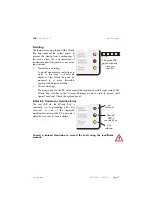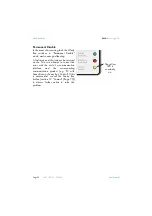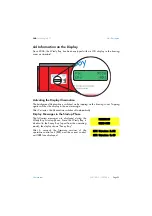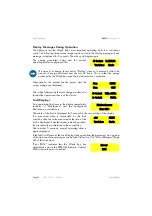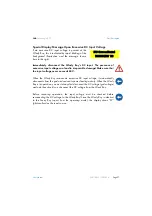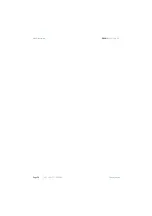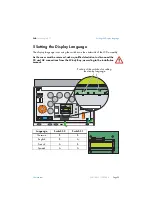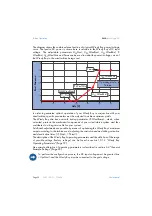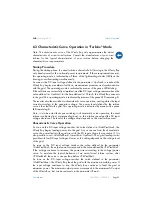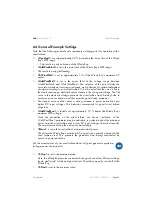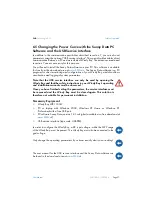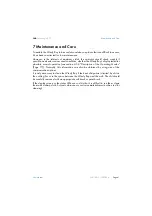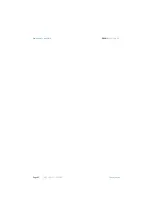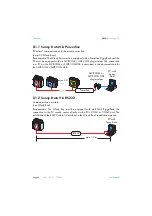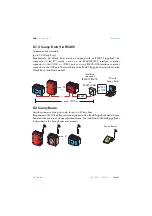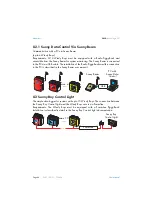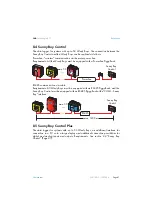
SMA
Technologie AG
Turbine Operation
User Manual
WB1100LV-11:FE2606
Page 33
6.3 Characteristic Curve Operation in "Turbine" Mode
Startup Procedure
During the startup phase, the wind turbine is almost idle. At this stage, the Windy Boy
only needs power for the on-board power requirements. If these requirements are met,
this operating mode is indicated by all three of the light-emitting diodes (LEDs) on the
housing cover illuminating simultaneously.
As soon as the DC input voltage defined in the parameter <UpvStart> is reached, the
Windy Boy begins a number of self-tests, measurement processes and synchronization
with the grid. This operating mode is indicated by means of the green LED blinking.
If the self-tests are successfully completed, and the DC input voltage remains above the
value defined in <UpvStart> for the time defined in <T-Start>, the Windy Boy connects
to the grid. This operating mode is indicated by means of the green LED remaining lit.
The inverter also then switches to characteristic curve operation, and regulates the input
current according to the generator voltage. The power level defined by the turbine
curve is thus fed into the grid. This operating mode is indicated by means of the green
LED remaining lit.
Here, it is to be noted that upon switching to characteristic curve operation, the wind
turbine is subjected to a corresponding load, i.e. the rotation speed and the DC input
voltage decrease. The level of the voltage drop depends on the wind turbine used.
Characteristic Curve Operation
As soon as the DC input voltage reaches the value defined in <UdcWindStart>, the
Windy Boy begins feeding power into the grid. As you can see from the characteristic
curve, the power fed into the grid rises with the DC input voltage (curve section I). It is
also possible to set <UdcWindStart> lower than <UpvStart>. Thus, grid feeding is also
possible with low DC input voltages. However, this setting depends on the voltage level
of the grid.
As soon as the DC input voltage reaches the value defined by the parameter
<UdcWindMid>, the output power corresponds to the value defined by <P-Wind-Mid>.
If the voltage continues to increase, the power rises according to the voltage/power
curve. To emulate the typical behavior of an actual wind turbine system, after
<P-WindMid> the curve is steeper than before <P-WindMid>.
As soon as the DC input voltage reaches the value defined in the parameter
<UdcWindMax>, the Windy Boy feeds the grid with the maximum possible power. If
the input voltage continues to rise, the Windy Boy continues to feed the grid at
maximum power. The maximum output power corresponds to the maximum AC output
of the Windy Boy, but can be reduced via the parameter <Pmax>.
Note: The characteristic curve of the Windy Boy only approximates the actual
characteristics of a real wind turbine. Consult the manufacturer of your wind
turbine for the typical characteristics of your turbine before changing the
characteristic curve parameters.
Summary of Contents for Windy Boy WB 1100LV
Page 2: ......
Page 6: ...Explanation of Symbols Used SMA Technologie AG Page 6 WB1100LV 11 FE2606 User Manual...
Page 10: ...Safety Instructions SMA Technologie AG Page 10 WB1100LV 11 FE2606 User Manual...
Page 28: ...Unit Description SMA Technologie AG Page 28 WB1100LV 11 FE2606 User Manual...
Page 30: ...Setting the Display Language SMA Technologie AG Page 30 WB1100LV 11 FE2606 User Manual...
Page 40: ...Turbine Operation SMA Technologie AG Page 40 WB1100LV 11 FE2606 User Manual...
Page 42: ...Maintenance and Care SMA Technologie AG Page 42 WB1100LV 11 FE2606 User Manual...
Page 50: ...Extensions SMA Technologie AG Page 50 WB1100LV 11 FE2606 User Manual...
Page 54: ...Technical Data SMA Technologie AG Page 54 WB1100LV 11 FE2606 User Manual...
Page 72: ...General Information SMA Technologie AG Page 72 WB1100LV 11 FE2606 User Manual...
Page 74: ...Stand Alone Systems SMA Technologie AG Page 74 WB1100LV 11 FE2606 User Manual...
Page 77: ......

